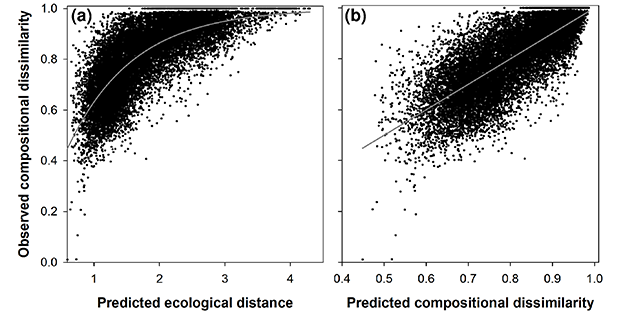
Ecological Archives A025-131-A5
Karel Mokany, Joshua J. Thomson, A. Jasmyn J. Lynch, Gregory J. Jordan, and Simon Ferrier. 2015. Linking changes in community composition and function under climate change. Ecological Applications 25:2132–2141. http://dx.doi.org/10.1890/14-2384.1
Appendix E. The Generalized Dissimilarity Model of compositional turnover.
Fig. E1. (a) The final model of compositional dissimilarity, and (b) the relationship between observed and predicted dissimilarity. Points are each of the 15,225 site pairs, the line in (a) shows the GDM model, while the line in (b) is the 1:1 line.
Fig. E2. Compositional dissimilarity model response functions. GDM transformed environmental values as a function of the original environmental values for each of the eight explanatory variables included in the model of community compositional dissimilarity (a – h). The relative y-axis (transformed) range for the response of each variable indicates the relative strength of that variable in determining compositional dissimilarity, while the nonlinearity of the response indicates which sections of the environmental gradient have steeper predicted compositional dissimilarity.